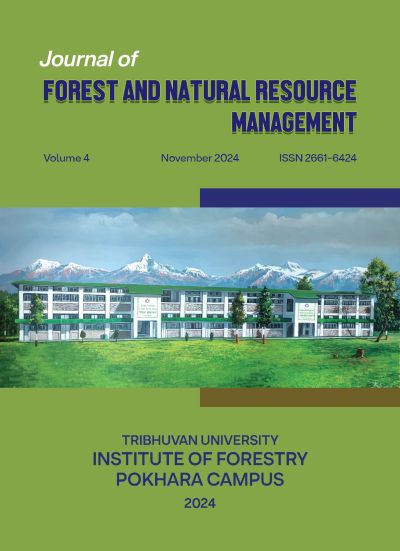Community Forestry in Nepal: A Review of Socioeconomic Contribution to Forest-Dependents in a Changing Climate
DOI:
https://doi.org/10.3126/jfnrm.v4i1.74228Keywords:
Adaptation and mittigation, climatic hazards, participatory forestry, poverty reductionAbstract
Community forestry (CF) in Nepal has successfully revitalized the barren hills and improved the socioeconomic conditions of communities that depend on forests. However, a thorough review of its actual contribution to poverty reduction and its potential to mitigate the impacts of climate change remains lacking. To contribute to this statement, we reviewed and synthesized the literature from 1987 to 2023, focusing on Nepal's community forest management scenario and its contribution to the socioeconomic aspect of forest-dependent communities in a changing climate. This will aid in generating evidence regarding the extent to which CF contributes to the economic upliftment of forest users and how it should address the gaps in the CF's poverty reduction objective. This review aims to help policymakers and practitioners find ways to integrate climate change issues into community forest management. This paper is fully based on a literature review where articles and journals pertaining to the topic were searched, and websites such as Crossref, PubMed, Scopus, Web of Science and Google Scholar were used to access the documents. The review explains that CF substantially contributes to forest development, community development, and the socioeconomic change of forest-dependent communities in a changing climate. Nevertheless, the economic benefits, particularly the contribution to poverty reduction, have not met expectations yet. However, we should not undermine its potential to reduce poverty. Thus, focusing on the context-specific policy should be a priority.
Downloads
Downloads
Published
How to Cite
Issue
Section
License
© Institute of Forestry, Pokhara Campus




